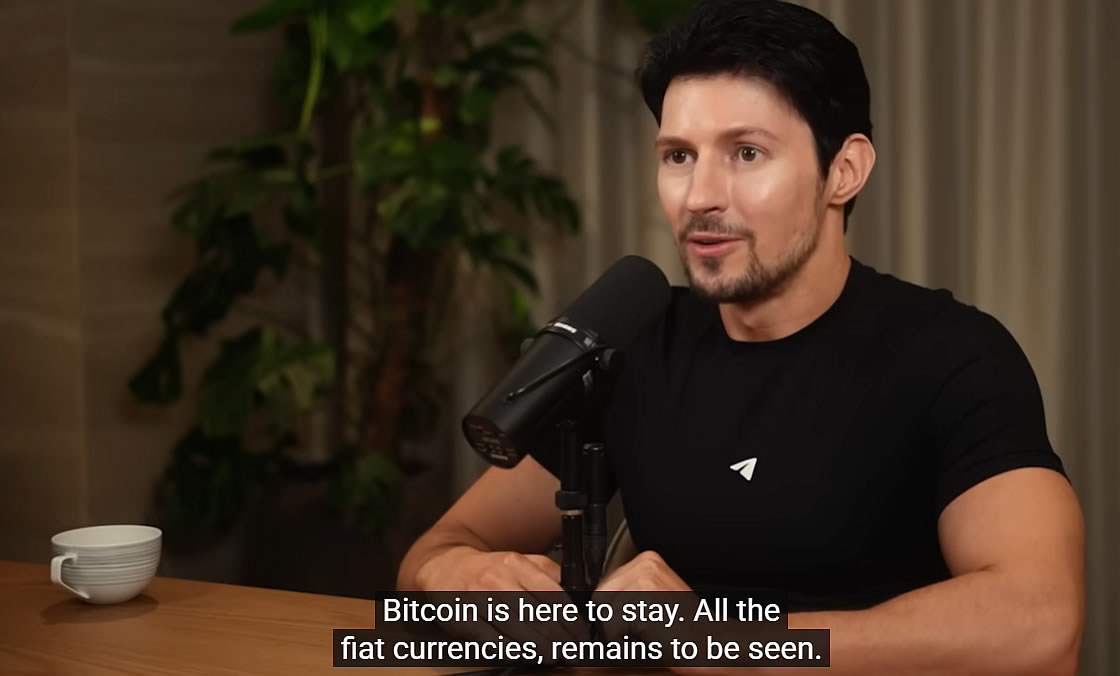Pavel Durov bought thousands of Bitcoin in 2013 at roughly $700 each and says those holdings have allowed him “to stay afloat.” His Bitcoin purchase remains a core personal reserve and he has repeatedly refused to sell, citing Bitcoin’s fixed supply and censorship resistance.
-
Pavel Durov bought thousands of BTC in 2013 at about $700 per coin.
-
He used Bitcoin proceeds to fund personal expenses while Telegram operated at a loss.
-
Toncoin peaked at $8.25 in mid-2024 and has since fallen ~67% from that high.
Primary keyword: Pavel Durov Bitcoin — Read how Durov used early Bitcoin holdings to fund Telegram-era costs. Learn TON and Toncoin context. Read now.
COINOTAG
What is Pavel Durov’s Bitcoin holding and how has he used it?
Pavel Durov Bitcoin holdings date to 2013, when he purchased several thousand BTC at roughly $700 each. Durov says those early investments financed personal costs — including real estate and private travel — while Telegram remained a money-losing operation for him personally.
He described buying at a “local maximum” near $700 per BTC and investing “a couple of million” at the time. Durov has repeatedly framed Bitcoin as a censorship-resistant store of value and has said he is unwilling to sell.
How many Bitcoin did Durov buy and at what price?
Durov stated on the Lex Fridman podcast that he acquired his first “few thousand Bitcoin” in 2013 at about $700 per coin and invested “a couple of million.” When BTC later dropped below $200 in the following bear market, he said critics ridiculed him but he held firm.

Pavel Durov talks Bitcoin to Lex Friedman. Source: YouTube
Why does Durov say Bitcoin helps him “stay afloat”?
Durov explained that Telegram often operates at a loss and that Bitcoin provided a personal financial buffer. He argued Bitcoin’s fixed supply and predictable issuance make it an attractive long-term reserve compared with fiat currencies that can be rapidly expanded by governments.
Expert context: The comments were made publicly on the Lex Fridman podcast and recorded on YouTube, where Durov emphasized Bitcoin’s resistance to confiscation and political censorship.
What is the status of TON and Toncoin compared with Bitcoin?
Telegram’s blockchain initiative, originally developed as the Telegram Open Network (TON), was designed for scalability using shardchains to support hundreds of millions of users. Regulatory issues prevented a full Telegram-led launch, but the network lives on as The Open Network and is used for NFTs and other on-chain activity.
| Metric | Value |
|---|---|
| Toncoin all-time high (mid-2024) | $8.25 |
| Drop since ATH | ~67% |
| Approximate current price (implied) | ~$2.72 |
Frequently Asked Questions
Did Pavel Durov say he would never sell his Bitcoin?
Durov said he was not going to sell and that he sees Bitcoin as the way money should work, highlighting censorship resistance and predictable supply. His statement was made on the Lex Fridman podcast and repeated in subsequent interviews.
How did Telegram’s TON project evolve after regulatory hurdles?
TON was rebranded as The Open Network and continued without direct Telegram control. It retained scalability features like shardchains and has become notable for NFT activity, despite regulatory restrictions that prevented an initial Telegram-hosted launch.
Key Takeaways
- Early investment: Durov bought thousands of Bitcoin in 2013 at ~ $700 per BTC.
- Funding role: Those holdings financed personal expenses while Telegram operated at a loss.
- TON context: The Open Network (TON) keeps evolving; Toncoin hit $8.25 in mid-2024 and has since fallen ~67%.
Conclusion
Pavel Durov Bitcoin remarks underscore the role early crypto holdings can play as a personal reserve when a founder’s primary venture is not profitable. Durov’s public statements, given on the Lex Fridman podcast and visible on YouTube, emphasize Bitcoin’s fixed supply and censorship-resistant characteristics. For readers, the episode provides direct quotes and a primary-source account of why Durov retains his BTC and how TON continues to operate independent of Telegram’s original launch plans.
